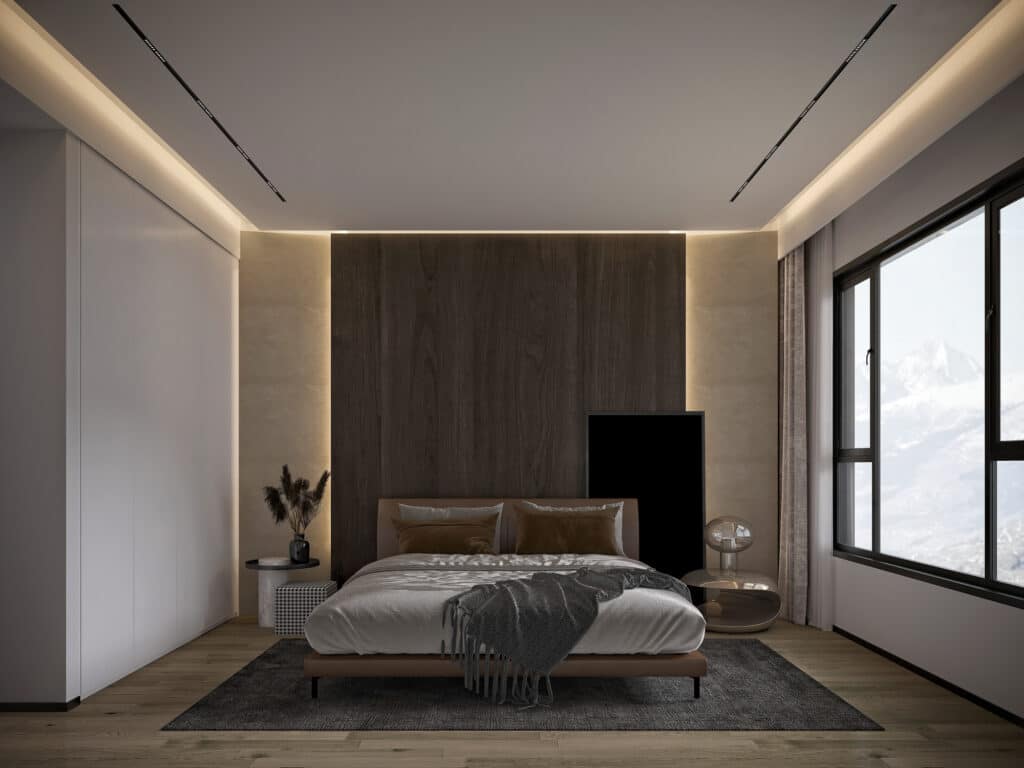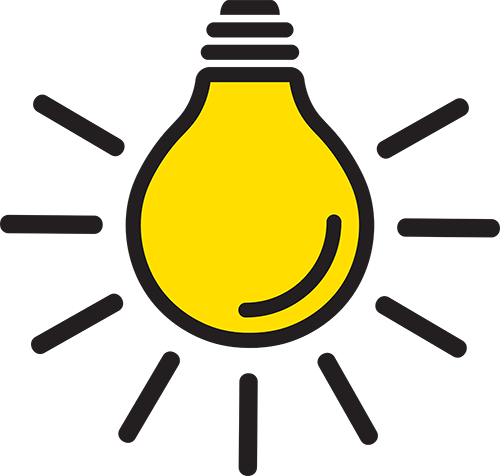Lighting Design Planning that Elevates Every Room

When it comes to enhancing your home’s ambiance and functionality, lighting design planning plays a pivotal role. It’s not just about choosing stylish fixtures; it’s about crafting a lighting scheme that brings out the best in each room. From the cozy corners of Woodland Park, SC, to the vibrant spaces in Winona, SC, homeowners are discovering the transformative power of well-thought-out lighting designs. This approach not only elevates the aesthetic appeal of your space but also improves its usability and energy efficiency.
Layered lighting strategies, for instance, involve combining various types of lighting to create a versatile and inviting atmosphere. This method ensures that each room can adapt to different activities and moods, making your home more flexible and enjoyable. Whether it’s ambient lighting for a soft glow, task lighting for focused activities, or accent lighting to highlight architectural features, each layer contributes to the overall ambiance.
Switch placement and code-aware circuit layouts are equally crucial in lighting design planning. Thoughtful placement of switches can enhance the functionality of your lighting, making it more convenient and accessible. Meanwhile, adhering to building codes ensures your lighting design is not only beautiful but also safe and efficient. These technical aspects might not be the first thing you think of, but they are fundamental to a successful lighting plan.
Mister Sparky, based in Florence, SC, understands the importance of these elements in lighting design planning. Our expertise ensures that every lighting project we undertake not only meets our clients’ aesthetic expectations but also their practical needs. By considering every detail, from the initial design concept to the final installation, we help bring your vision to life, ensuring your home shines in its best light.
The Basics of Lighting Design Planning
Delving deeper into lighting design planning, it’s essential to start with understanding the basics. The process begins with assessing the needs of each room, considering factors such as room size, ceiling height, and natural light availability. This assessment guides the selection of appropriate lighting fixtures and their optimal placement. By doing so, it ensures that each space is not only well-lit but also harmonizes with the home’s overall aesthetic.
Incorporating layered lighting is a fundamental strategy in lighting design planning. This approach involves using a mix of ambient, task, and accent lighting to achieve a balanced and functional space. Ambient lighting provides the general illumination, task lighting focuses on specific areas for activities like reading or cooking, and accent lighting highlights architectural features or artwork. Together, these layers create a dynamic and adaptable environment.
Switch placement and circuit layout also play a significant role in the effectiveness of lighting design planning. Strategic switch placement enhances the usability of lighting by making it easy to control the atmosphere of a room. Similarly, a well-planned circuit layout, mindful of building codes, ensures that the lighting system is safe, efficient, and capable of accommodating future modifications. These technical details, though often overlooked, are crucial for a seamless and functional lighting design.
Lastly, Mister Sparky’s expertise in lighting design planning shines through our commitment to detail and quality. From the initial concept to the final installation, we consider every aspect of lighting design to ensure our clients in Florence, SC, and beyond, achieve their desired outcome. Our approach not only meets practical needs but also elevates the aesthetic appeal of each space, making every home we work on a testament to thoughtful and effective lighting design.
Layered Lighting: A Key to Versatility and Ambiance
Layered lighting is the cornerstone of versatile and inviting spaces, acting as a transformative element in lighting design planning. By integrating ambient, task, and accent lighting, rooms can effortlessly transition from a place of relaxation to a functional area for work or hobbies. This flexibility is particularly important in homes where spaces often serve multiple purposes. Mister Sparky’s approach ensures that every room in your Florence, SC home can adapt to your changing needs and moods with ease.
Ambient lighting sets the foundational glow, bathing rooms in a soft light that mimics natural daylight. It’s the layer that ensures you never walk into a dark room, providing a comfortable level of brightness. Task lighting, on the other hand, focuses on specific areas to make activities like reading or cooking easier and more enjoyable. Mister Sparky professionals skillfully select and position these lighting types to enhance your home’s functionality and aesthetic appeal.
Accent lighting adds depth and dimension, drawing attention to architectural features, artwork, or collections. This layer of lighting design planning not only elevates the visual interest of a space but also allows homeowners to express their personal style. By carefully choosing which elements to highlight, Mister Sparky helps bring your home’s best features into the spotlight, creating a dynamic and engaging environment.
Incorporating these layers into your home’s lighting design planning requires expertise and attention to detail. Mister Sparky in Florence, SC, excels at creating balanced and beautiful lighting schemes that cater to both the practical and aesthetic needs of homeowners. Through thoughtful planning and strategic implementation, we ensure that your home not only looks good but also feels welcoming and comfortable, no matter the time of day or night.
Strategic Switch Placement for Optimal Convenience
In lighting design planning, the strategic placement of switches plays a vital role in enhancing the convenience and functionality of your home. By carefully considering where to place switches, Mister Sparky ensures that controlling the lighting in your Florence, SC home is both intuitive and accessible. This thoughtful approach allows homeowners to easily adjust the ambiance and functionality of each room, making daily routines smoother and more enjoyable.
For instance, placing switches at entry and exit points of rooms ensures that you can easily light up a space as you enter or dim it when leaving. This not only adds to the convenience but also promotes energy efficiency by reducing the likelihood of lights being left on unnecessarily. Mister Sparky’s expertise in lighting design planning extends to recommending dimmer switches in certain areas, allowing for adjustable light levels that can create the perfect atmosphere for any activity or time of day.
Moreover, considering the layout of furniture and the flow of movement within each room is crucial for optimal switch placement. Mister Sparky professionals take into account the practical aspects of daily life, ensuring that switches are always within reach when you need them. This careful planning eliminates the need for unnecessary movement or adjustments, making your home’s lighting system both user-friendly and aesthetically pleasing.
Finally, integrating smart lighting controls is another aspect of lighting design planning that can significantly enhance convenience. With the expertise of Mister Sparky, homeowners in Florence, SC, can enjoy the benefits of being able to control lighting through mobile devices or voice commands. This modern solution not only elevates the functionality of your lighting system but also aligns with the contemporary lifestyle, bringing your home into the future of convenience and efficiency.
Understanding Code-Aware Circuit Layouts in Your Home
In lighting design planning, understanding code-aware circuit layouts is crucial for ensuring your home’s lighting system is not only effective but also compliant with safety standards. Mister Sparky’s professionals are well-versed in these regulations, ensuring that every lighting project in Florence, SC, adheres to the required codes. This attention to detail prevents potential electrical issues, making your home safer and more reliable. By focusing on code-compliant designs, we safeguard your lighting installations against common pitfalls, enhancing overall safety and functionality.
When planning circuit layouts, it’s essential to consider the capacity and distribution of electrical loads. Mister Sparky takes into account the specific needs of each room, balancing the demand across various circuits to avoid overload. This strategic approach ensures that your home’s lighting and electrical appliances operate efficiently without tripping breakers or causing outages. Proper load distribution is key to a well-functioning lighting design, contributing to the longevity and reliability of your home’s electrical system.
Another aspect of code-aware circuit layouts involves the integration of GFCI (Ground Fault Circuit Interrupter) outlets in areas prone to moisture, such as bathrooms and kitchens. Mister Sparky includes these safety devices in our lighting design planning to protect against electrical shock. Installing GFCI outlets is a code requirement that we diligently follow, enhancing the safety of spaces where water and electricity are in close proximity. This careful planning not only meets code standards but also provides peace of mind for homeowners in Florence, SC.
Lastly, future-proofing your home’s lighting design is an important consideration. Mister Sparky designs circuit layouts with flexibility in mind, allowing for easy updates or expansions. Whether you’re considering adding more fixtures or upgrading to smart lighting solutions, our forward-thinking approach ensures your lighting system can adapt to future changes. This foresight in planning makes it simpler to update your home’s lighting, keeping it both modern and compliant with evolving standards.
Lighting Design Planning for Energy Efficiency
Incorporating energy efficiency into lighting design planning is a smart move for any homeowner. Mister Sparky professionals understand that efficient lighting not only reduces energy consumption but also lowers utility bills. By selecting LED fixtures and bulbs, we ensure that homes in Florence, SC, benefit from the latest in energy-efficient technology. These choices contribute to a greener home environment without sacrificing style or functionality.
Properly planning the placement of lights plays a crucial role in maximizing energy efficiency. Strategic positioning allows for the optimal use of natural light, reducing the need for artificial lighting during daylight hours. Mister Sparky takes into account the direction of windows and the sun’s path when designing lighting layouts. This approach ensures that homes in Woodland Park, SC, use less energy, aligning with sustainability goals.
Dimmer switches and motion sensors are another key aspect of energy-efficient lighting design planning. By installing dimmers, homeowners can adjust light levels to suit their needs, conserving energy when full brightness is not necessary. Motion sensors, on the other hand, ensure lights are only on when needed, a feature that’s especially useful in seldom-used spaces. Mister Sparky’s expertise in integrating these technologies helps homes in Winona, SC, achieve significant energy savings.
Lastly, educating homeowners on the benefits of energy-efficient lighting design planning is part of our commitment. Mister Sparky provides valuable insights on how to maintain an energy-efficient home through proper lighting. From choosing the right bulbs to understanding the impact of color temperature on energy usage, we equip our clients with the knowledge to make informed decisions. This education empowers homeowners to actively contribute to a more sustainable future.

Photo from iStock – Credit: EsinTellioglu
Selecting the Right Fixtures for Each Room
Selecting the right fixtures for each room is a crucial step in lighting design planning. It ensures that every space not only looks appealing but also serves its intended purpose efficiently. In Woodland Park, SC, homeowners prioritize fixtures that blend form and function, enhancing both the beauty and usability of their spaces. This approach allows for a harmonious balance between style and practicality, elevating the overall home environment.
In the living room, for example, choosing fixtures that provide ambient lighting can create a welcoming atmosphere. This is where dimmable overhead lights or elegant chandeliers can play a significant role. They offer flexibility in adjusting light levels to suit different moods and occasions. Such thoughtful selection ensures the living room is adaptable, catering to both lively gatherings and quiet evenings.
In task-oriented areas like the kitchen, lighting design planning focuses on fixtures that offer bright, focused light. Under-cabinet lighting is a popular choice in Winona, SC, illuminating countertops without casting shadows. This not only enhances the functionality of the space but also contributes to its aesthetic appeal. By selecting the right fixtures, homeowners can enjoy both a well-lit workspace and a visually appealing kitchen.
Lastly, the bedroom requires a different approach, prioritizing fixtures that evoke calm and relaxation. Soft, warm lights from table lamps or wall sconces are ideal for this intimate space. They provide sufficient light for reading or getting ready for bed without being overly harsh or bright. Through careful fixture selection, lighting design planning ensures every room meets its unique needs, creating a cohesive and inviting home.
Incorporating Smart Lighting into Your Design Plan
Incorporating smart lighting into your lighting design planning brings a level of convenience and efficiency that traditional systems can’t match. With the ability to control lights via smartphone or voice commands, homeowners in Woodland Park, SC, can easily adjust their lighting to suit any situation. This technology not only makes managing your home’s lighting simpler but also adds an extra layer of security by allowing you to control lights remotely. As a result, you can simulate occupancy when you’re away, deterring potential intruders.
Smart lighting systems also offer significant energy savings, a key aspect of lighting design planning. By enabling homeowners to dim lights or turn them off automatically when not needed, these systems reduce unnecessary power consumption. In Winona, SC, where energy efficiency is a growing concern, adopting smart lighting can lead to substantial reductions in utility bills. This makes smart lighting an eco-friendly choice for those looking to minimize their environmental impact.
Another advantage of smart lighting is its ability to create personalized lighting scenes. For instance, you can set a “movie night” scene that dims the lights just right, enhancing your viewing experience without leaving the couch. This level of customization ensures that every room in your home can support the activities you love most, from a vibrant kitchen for cooking to a serene bedroom for relaxing.
Finally, integrating smart lighting into your home’s design plan supports future technological advancements. As smart home devices continue to evolve, having a flexible and adaptable lighting system ensures your home remains compatible with new innovations. This foresight in lighting design planning positions your home at the forefront of smart technology, making it not only more enjoyable to live in but also potentially increasing its market value.
Common Pitfalls in Lighting Design and How to Avoid Them
In lighting design planning, overlooking the importance of natural light is a common mistake. Many homeowners in Woodland Park, SC, fail to consider how the sun’s path affects their rooms. By incorporating natural light into your plan, you can enhance the mood and reduce the need for artificial lighting during the day. This approach not only saves energy but also brings a warm, natural glow to your space.
Another pitfall is neglecting task lighting in kitchens and bathrooms. These areas require focused lighting for safety and functionality. In Winona, SC, adding under-cabinet lights in the kitchen or well-placed sconces in the bathroom can make a significant difference. Proper task lighting ensures that these critical areas are both safe and efficient for everyday use.
Choosing the wrong size or style of lighting fixtures is also a common error. Fixtures that are too large can overwhelm a room, while those that are too small may not provide sufficient light. It’s crucial to balance the scale of your fixtures with the size of your space. This balance ensures that each room feels harmoniously designed and well-lit.
Finally, many overlook the flexibility that dimmer switches and adjustable lighting offer. Installing dimmers allows you to change the atmosphere of a room instantly. Whether you’re hosting a dinner party or seeking a quiet reading nook, adjustable lighting can create the perfect ambiance. By avoiding these common pitfalls, homeowners can achieve a well-planned and beautifully lit home.

Frequently Asked Questions
What is lighting design planning?
Lighting design planning is a crucial step in creating inviting and functional spaces within homes. It involves selecting the right mix of light sources to enhance a room’s aesthetic and utility. This process ensures that switch placement and circuit layouts comply with building codes. By carefully considering each layer of lighting, homeowners can achieve a balanced and beautiful environment.
How does lighting impact room ambiance?
Lighting plays a key role in setting a room’s mood and atmosphere. It can make spaces feel warm and inviting or cool and professional. By adjusting brightness and color, homeowners can influence how a room feels. Proper lighting design planning ensures every space meets its desired ambiance.
What are the steps in lighting design planning?
First, evaluate the room’s function and layout to decide on the lighting needs. Next, choose a mix of ambient, task, and accent lights for a balanced look. Then, plan switch placement and circuit layouts, keeping building codes in mind. Lastly, select fixtures that complement the room’s decor and meet the planned lighting goals.
Can lighting design save energy?
Absolutely, smart lighting design planning can significantly cut down on energy use. By incorporating LED bulbs and automated systems, homeowners can enjoy bright spaces without high bills. These strategies not only reduce electricity consumption but also extend the lifespan of lighting fixtures. Thus, a thoughtful approach to lighting design is both eco-friendly and cost-effective.
What trends are shaping lighting design?
Current trends in lighting design planning focus on sustainability and technology integration. Homeowners now prefer energy-efficient LED lights that lower utility bills and reduce environmental impact. Smart lighting systems, controllable via smartphones or voice commands, are becoming increasingly popular for their convenience. Additionally, there’s a growing interest in personalized lighting solutions that allow for adjusting brightness and color to suit different moods and activities.
















